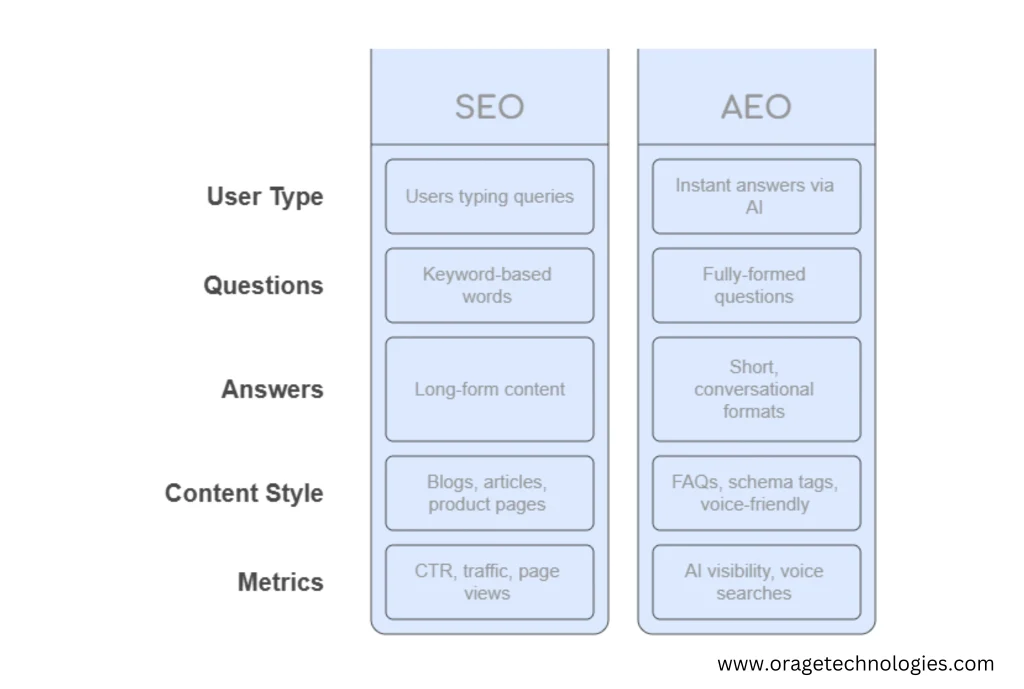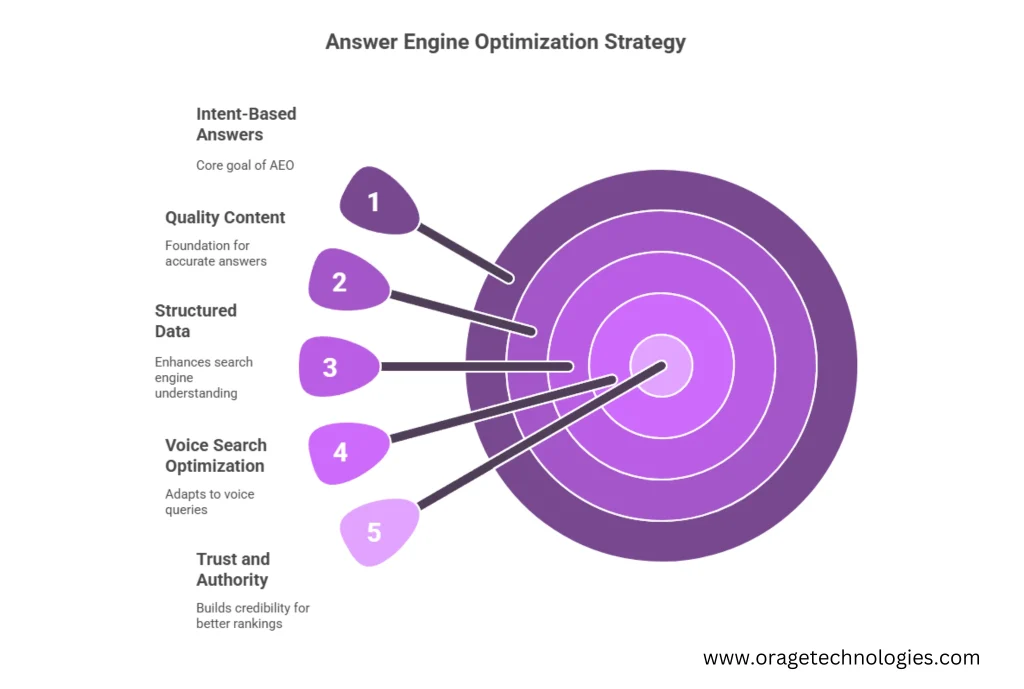Understanding AEO and SEO in Simple Terms
The world of online search is changing fast. Search Engine Optimization (SEO) has been the go-to strategy for businesses to rank higher on Google and other search engines. By 2028, the SEO industry is expected to reach a massive $122.11 billion, driven by the explosion of online content and faster internet speeds. But SEO isn’t what it used to be—no more stuffing keywords or spamming backlinks. It’s now about delivering real value to users. Enter Answer Engine Optimization (AEO), a fresh approach that’s gaining traction. AEO focuses on providing instant, precise answers to user questions, often appearing as snippets at the top of search results, grabbing about 8.6% of clicks, according to Ahrefs.
So, what’s the difference, and is AEO taking over SEO? Let’s break it down in a way that’s easy to understand.
What Is an Answer Engine?
People today want answers quickly. Studies show our attention spans are shrinking, and we expect search engines to deliver fast, accurate results. That’s where Answer Engines come in. Unlike traditional search results that list websites, Answer Engines use AI to pull the most relevant answer from across the web and present it directly to you—often without needing to click a link.
Think of voice assistants like Siri or Alexa, or Google’s “featured snippet” at the top of search results. These are Answer Engines in action, designed to understand your question and give you a clear, concise response. For example, if you ask, “What’s the best Mexican restaurant nearby?” the Answer Engine might show a quick answer with a restaurant name and address, pulled from trusted websites.
What Is Answer Engine Optimization (AEO)?
AEO is the process of optimizing your content to appear in these instant-answer spots, often called “position zero” or AI-generated results. It’s about crafting content that directly answers user questions in a clear, valuable way. Unlike SEO, which focuses on driving clicks to your website, AEO aims to provide the answer right on the search results page, whether through text snippets, voice search, or AI-driven results like Google’s Search Generative Experience.
AEO vs. SEO: How Are They Different?
While both AEO and SEO aim to help users find answers, their approaches are quite different. SEO is about improving your website’s ranking to get more clicks, using strategies like keyword optimization, quality content, and technical fixes. AEO, on the other hand, is all about being the direct answer to a user’s question, often without them visiting your site.
Here’s a simple comparison:
Aspect | SEO (Search Engine Optimization) | AEO (Answer Engine Optimization) |
|---|---|---|
User Focus | Users typing queries into a search bar | Users asking questions via AI or voice assistants |
Query Style | Keyword-based, e.g., “Mexican restaurants near me” | Full questions, e.g., “Where can I find good Mexican food nearby?” |
Content Format | Long-form blogs, articles, product pages | Short, conversational answers, FAQs, schema markup |
Metrics | Click-through rate, organic traffic, page views | Answer visibility, voice search accuracy |
Goal | Drive clicks to your website | Provide instant answers on search results |

In short, SEO gets users to your site, while AEO aims to answer their questions right away, often through AI or voice search.
Proven Strategies to Optimize for AEO
To succeed with AEO, you need to think like your audience and deliver exactly what they’re looking for. Here are six practical strategies to boost your AEO presence:
1. Research User Questions
Understand what your audience is asking. Use tools like Google Keyword Planner or Google Search Console to find popular questions (e.g., “What is…” or “How to…”). Focus on the user’s intent—what are they really trying to solve? AI tools can also help analyze real-time search trends to tailor your answers.
2. Create Clear, Answer-Focused Content
Write concise, high-quality content that directly answers user questions. Use natural language, bullet points, and clear headings to make it easy for search engines to pick up. For example, if someone asks, “How do I make a cake?” provide a short, step-by-step answer that’s easy to understand.
3. Use Structured Data (Schema Markup)
Structured data, like schema markup from Schema.org, helps search engines understand your content. Add FAQ, How-To, or Q&A schemas to your pages to increase your chances of appearing in featured snippets or answer boxes.
4. Optimize for Voice Search
Voice searches are conversational and often local, like “Find a coffee shop near me.” Write in a natural, conversational tone and include full-sentence answers. Optimize for “near me” queries to boost local visibility.
5. Build FAQ Pages
FAQ pages are AEO gold. They answer multiple user questions in one place, improving user experience and search visibility. Use structured data in your FAQs and regularly update them based on performance.
6. Establish Trust and Authority
Search engines favor credible sources. Publish consistent, high-quality content to build your brand’s authority. The more trusted your site, the more likely it is to be featured in answer snippets.

Why AEO Matters for Businesses
AEO is a game-changer for businesses looking to stand out online. Here’s why:
1. Boosts User Engagement
AEO delivers quick, accurate answers, making users happy. When users get what they need instantly, they’re more likely to trust your brand, spend time on your site, and return later. This can lower bounce rates and increase conversions.
2. Drives Organic Traffic
Appearing in featured snippets, answer boxes, or voice search results boosts your visibility. With over half of consumers using voice search to find local businesses, AEO can significantly improve your local SEO performance.
Will AEO Replace SEO?
No, AEO won’t replace SEO—they work together. SEO builds your overall online presence, while AEO ensures your content answers user questions instantly. Think of AEO as an evolution of SEO, adapting to how people search today with AI and voice assistants. By combining both, you can maximize your visibility and provide the best user experience.
Frequently Asked Questions
How do I optimize for Answer Engines?
Use question-based keywords, structured data, and concise, high-quality content that directly answers user queries to appear in featured snippets or voice search results.
What’s the difference between AEO and SEO?
AEO focuses on providing instant answers in search results, while SEO aims to improve your website’s ranking and drive clicks.
What is engine optimization?
Engine optimization means improving your content’s visibility in search engines through strategies like keyword research, quality content, and technical improvements.
